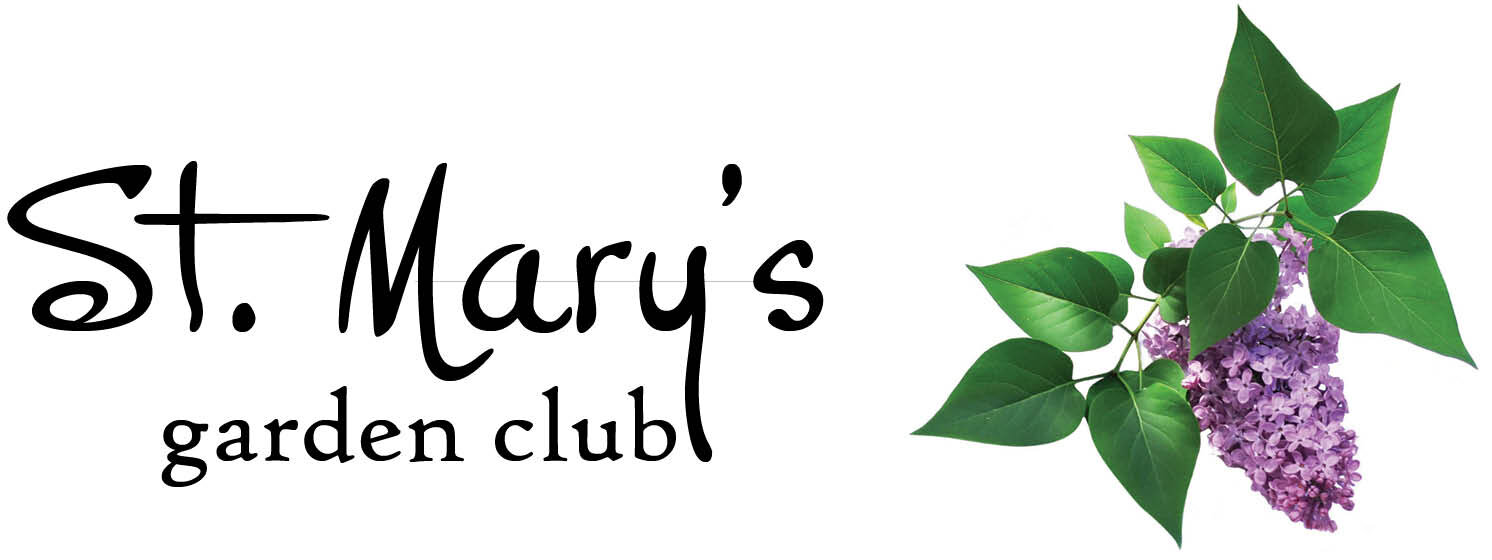Landscape in Your Living Room: Terrarium Tutorial
February 16, 2021
Marianne Dodge
References:
Kelly Orzel, SMGC member, garden writer and speaker
“The New Terrarium” by Tovah Martin
What is a terrarium?
A terrarium is a closed transparent container in which plants are grown.
1. Closed, but not sealed. Need access for maintenance.
2. Clear glass, not colored. Colored glass can reduce light penetration and may filter out some
wavelengths
“Open terrarium”
1. A dish garden, not a true terrarium
2. Suitable for plants that don’t like high humidity or condensation on their leaves or that need a lot of sunlight. Succulents are a good example of plants that belong in an open terrarium.
Examples:
1. Wardian cases
2. Apothecary jars
3. Glass cloches
4. Any clear glass container that can be covered with a lid such as a glass plate, cork plug, plastic wrap,
etc.
Sources of containers:
1. Thrift shops
2. Garden centers
3. Target, Walmart, Home Goods
4. online sources
A. Google search
B. H. Potter—beautiful, expensive Wardian cases
C. Anthropologie, Terrain—containers, kits—but expensive
D. vasemarket.com
Tools
Specialized tools are available such as long-handled tweezers and scissors
Use what you have around the house
1. iced tea spoon, skewers, straws, scissors
2. wall cleaner made from gluing a piece of sponge onto the end of a skewer
3. soil tamper made from gluing a cork onto the end of a skewer
Two types of closed terrariums:
Plants in pots under glass.
1. Easier to plant, maintain, replace
2. Can be artistically effective with unusual containers, a single specimen plant
3. Most easily accomplished with cloches
Planting directly in the container
1. Creates a small, enclosed ecosystem
2. More room to plant
3. Most easily accomplished with apothecary or similar jars
How to create a closed, planted terrarium:
Choose your container
1. Wide—easier access for maintenance
2. Tall and narrow
A. more dramatic
B. access limited so harder to maintain
C. may require specialized tools
Drainage-rocks
Filtration--charcoal to remove odors
1. Horticultural charcoal—available at garden centers
2. Activated charcoal
A. much more expensive than hort. charcoal but 4x as effective
B. purchase at aquarium supply store
Soil
1. your favorite container soil mix
2. mix your own
A. 1/3 peat, 1/3 perlite, 1/3 compost
B. 2/3 Promix, 1/3 compost (what I use)
3. for unusual plants, like carnivorous plants, be sure to research their needs
Embellishments
1. Natural materials like sticks, driftwood, rocks, shells
A. be sure to wash beach materials to get rid of salt
B. some materials like sea stars may soften over time due to high humidity
2. Fairy garden items
A. locally at Skillins, O’Donals
B. online. Stores like fairygardenstore.com carry a huge inventory
Plants
1. What to plant
A. plants that love high humidity, low to medium light
B. miniature plants or plants that can be pruned to stay small
2. Where to purchase
A. locally at Skillins, O’Donals, Broadway Gardens for more common varieties
B. online for more unusual varieties
a. Google search for terrarium plants
b. GlassworksHouse.com, Hirts.com, violetbarn.com, rosydawngardens.com
(miniature coleus)
3. cuttings of plants you have at home, common mosses collected locally (NO protected species)
4. Plant list at end of handout broken out into climbers, fillers, and groundcovers
Procedure
1. Design in your head first
A. use principles of design, considering color, texture, height, rule of odd numbers
B. as you work, be sure to leave some growing room (width and height) for your plants
C. don’t overcrowd your container
D. if the size of the container permits, use more soil in one area to mimic changing ground
elevation
2. First layer: ¼+ inches of drainage rocks
A. pebble to gravel size
B. larger river stones for a dramatic look, but container needs to be big as they take up more
space
3. Second layer: ¼+ inches of charcoal for filtration
A. rinse well before using or your drainage water will turn black
B. can mix charcoal with drainage stones, but separation has a cleaner look
C. to separate, use flattened coffee filters or window screen cut to the container’s diameter
4. Third layer: 2+ inches of soil
A. damp, but not dripping wet
B. be conscious of adding enough soil, but not so much that there’s no room for your plants.
5. Fourth layer: plants
A. remove a lot of the soil they came in
B. spread roots out; don’t be afraid to prune the long ones
C. gently tamp down the soil around the plant
6. Final layer: add your embellishments
Maintenance:
1. Water infrequently. It depends on where your terrarium is, what plants you used, and how often
you ventilate. Monitor weekly; water as often as 1 tablespoon per week to 1 tablespoon per 2 months.
2. Ventilate if you get a lot of condensation on the glass walls. Set the lid aside for a while until the
water evaporates. Move to a site with less direct sunlight, if possible.
3. Fertilize rarely. You don’t want your plants to grow too vigorously.
4. Prune as needed to keep your terrarium looking tidy.
Plant List (there are many, many more that are suitable)
Climbers
--Ivy (Hedera helix), both solid and variegated, ‘Feenfinger’ ‘Itsy Bitsy’ ‘Mini Easter’
--Ficus pumila, both solid and variegated, ‘Snowflake’
--Ficus pumila quercifolia, exceptional but hard to find except online, also works as a groundcover
Fillers
--Artillery Plant (Pilea glauca, Pilea depressa)
--Brake fern (Pteris ensiformis)
--Boston fern (Nephrolepis exaltata) ‘Fluffy Ruffles’
--Asparagus fern (Protasparagus densifolia)
--Arrowhead Plant (Syngonium nephytis) ‘Pink Fairy’
--Calico Plant (Alternathera ficoidea) ‘Filigree’
--Nerve Plant (Fittonia verschaffettii)
--Polka Dot Plant (Hypoestes phyllostachya)
--Strawberry Begonia (Saxifraga stolonifera sarmentosa)
--miniature African Violets
--Cryptanthus (a bromeliad)
--small-leaved Peperomias (Peperomia fraseri, Peperomia meridana & meridana maculata)
--miniature orchids
Groundcovers
--Spikemoss/Club Moss (Selaginiella kraussiana)
--Baby’s Tears (Soleirolia soleirolii and Helxine soleirolii)
--miniature grasses (Eleocharis radicans)
